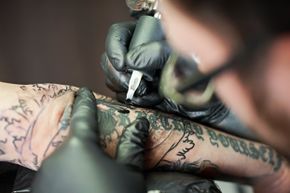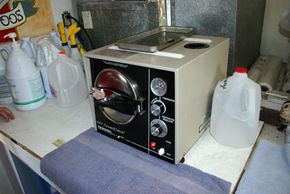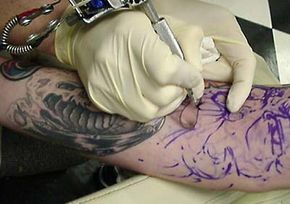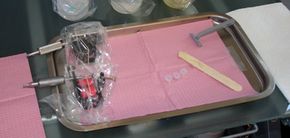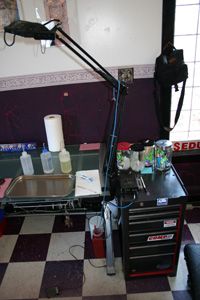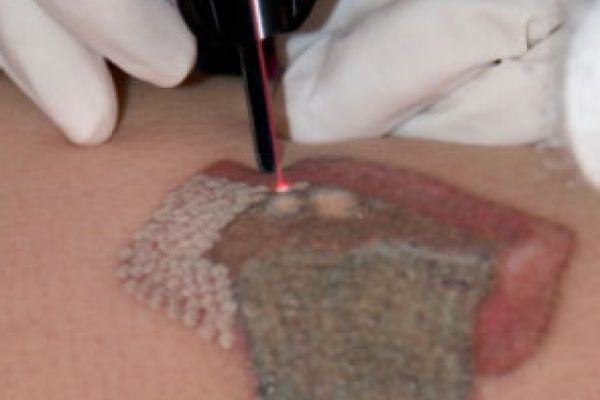Not too long ago, most Americans associated tattoos with sailors, bikers and sideshow artists. But tattoos have become more popular in recent years, and the people who get them are as diverse as the styles and designs they choose. And some people who would never think of tattooing pictures or symbols onto their bodies use permanent makeup -- a type of tattoo -- to emphasize their eyes and lips.
In this article, we'll look at how the tattoo process works and examine the safety and legal issues surrounding it.
Advertisement
Artists create tattoos by injecting ink into a person's skin. To do this, they use an electrically powered tattoo machine that resembles (and sounds like) a dental drill. The machine moves a solid needle up and down to puncture the skin between 50 and 3,000 times per minute. The needle penetrates the skin by about a millimeter and deposits a drop of insoluble ink into the skin with each puncture.
The tattoo machine has remained relatively unchanged since its invention by Samuel O'Reilly in the late 1800s. O'Reilly based his design on the autographic printer, an engraving machine invented by Thomas Edison. Edison created the printer to engrave hard surfaces. O'Reilly modified Edison's machine by changing the tube system and modifying its rotary-driven electromagnetic oscillating unit to enable the machine to drive the needle.
Modern tattoo machines have several basic components:
- A sterilized needle
- A tube system, which draws the ink through the machine
- An electric motor
- A foot pedal, like those used on sewing machines, which controls the vertical movement of the needle.
When you look at a person's tattoo, you're seeing the ink through the epidermis, or the outer layer of skin. The ink is actually in the dermis, which is the second layer of the skin. The cells of the dermis are far more stable than the cells of the epidermis, so the tattoo's ink will stay in place, with minor fading and dispersion, for a person's entire life.
Next, we'll look at how artists actually create tattoos, from preparation to finishing touches.
Advertisement
